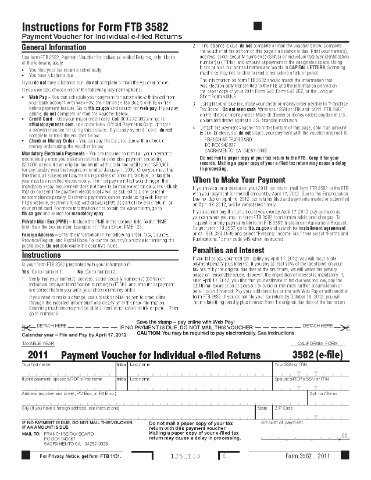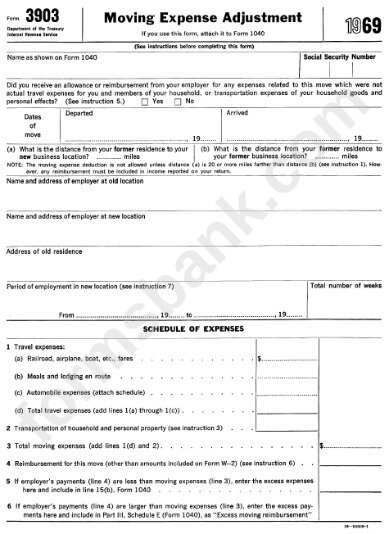Contents:


The expenditure incurred on these inputs is the cost of production in economics. The concept of cost in economics refers to the total expenditure incurred in producing a commodity. In economics, the cost is the total – explicit cost and implicit cost. Recurring costs Recurring costs are costs that are repeated when an organization produces similar goods or services on a continuing basis. Examples of recurring costs are purchase cost for real estate upon which a plant will be built and construction costs.
Scandinavian cooperation launches novel one-stop maintenance concept for offshore wind farms – EIN News
Scandinavian cooperation launches novel one-stop maintenance concept for offshore wind farms.
Posted: Thu, 20 Apr 2023 18:43:00 GMT [source]
When a company prepares its balance sheet, most of its assets will be recorded at historical cost. However, some highly liquid assets need to be recorded at fair market value. Real Cost of production or business operation on the other hand includes all such expenses/costs of business which may or may not involve actual monetary expenditure.
CUSTOMER SERVICE
Does a firm need to have a grasp of the concepts of differential cost, opportunity cost and sunk cost to be effective in making business decisions? When a company knows both its marginal cost and marginal revenue for various product lines, it can concentrate resources towards items where the difference is the greatest. Instead of investing in minimally successful goods, it can focus on making individual units that maximum returns. Marginal cost is calculated as the total expenses required to manufacture one additional good.
On the other hand, if the business opts to follow the cost concept, it’s not allowed to record revaluation. DescriptionDebitCreditAsset revaluedXXXOther Comprehensive IncomeXXXThe debit impact of the transaction is recording an increase in the asset value. On the other hand, credit impact is recording unrealized gains in equity.
To illustrate, assume that Kelly owns a small business selling seat cushions at sporting events. She buys the cushions from a wholesale company for $1 each and resales them to customers at the stadium for $5 each. She also paid $15,000 for rent on her booth and $9,600 for miscellaneous expenses. In this example, total product costs are calculated as $1 per cushion times 10,500 sold equals $10,500. Or, her product costs equal the costs of the inventory or product.
If the hat factory was unable to handle any more units of production on the current machinery, the cost of adding an additional machine would need to be included in marginal cost. The 1,500th unit would require purchasing an additional $500 machine. In this case, the cost of the new machine would need to be considered in the marginal cost of production calculation as well. Marginal cost is also essential in knowing when it is no longer profitable to manufacture additional goods.
In our day-to-day lives, we often come across the llc accounting of cost. Yet to define cost in real terms we have to go through a complex process of understanding. This is so because there are many types of costs and knowing them is often an ardent task for the people who incur them.
Practice video problem 3: Contribution margin income statement
Beyond that point, the cost of producing an additional unit will exceed the revenue generated. The historical cost in accounting is the price of an asset, liability, or equity at which it was purchased or acquired for the first time and is recorded on the balance sheet. Cost Concept in Economicsclass 11 notes is presented in this post for easy access to the students. The cost concept in economics tells us how expensive it will be to produce a certain good or service. Since production costs are important in determining a firm’s output, you must know in detail about the cost concept in economics.
Saving pounds of food waste for the planet – parkview.com
Saving pounds of food waste for the planet.
Posted: Fri, 21 Apr 2023 20:25:06 GMT [source]
Examples of this cost concept Involve Actual Expenditure of Funds. Magick Musicals sells custom guitars that they purchase from a local artist. Magick purchases the guitars from the artist for $960 each, marks them up, and resells them for $2,200 each.
What assets are excepted from historical cost?
Cost and output analysis is related to the production function, factor prices and efficiency of the entrepreneur. Various Cost Concepts have been propounded by different managers, economists and accountants. Differential Cost is that portion of the cost of a function attributable to and identifiable with an added feature, i.e. the change in costs as a result of change in the level of activity or method of production.
- The cost concept in economics tells us how expensive it will be to produce a certain good or service.
- Moreover, we know, in order to increase the production, certain expenses may not increase at all, only some expenses relating to materials, labour and variable expenses are increased.
- Producer goods and services are used to produce consumer goods and services or other producer goods.
- Liabilities issued by firms in exchange for services and goods are reported at their cost.
- To illustrate cost behavior assume that Big Drink Company sells drinks in souvenir cups at an entertainment venue.
It is the cost in which the expenses are included namely the price of raw materials, wages of labour, and interest on capital. Rent on land, salaries of managers and the normal profit of entrepreneurs. Let’s say a company purchased machinery for $50,000 3 years ago and a building for $100,000 5 years ago. Now, the market value of machinery is $20,000, but as per books, after applying depreciation, the value is showing as $ 30,000.
Therefore, it can be measured by changes to what expenses are incurred for any given additional unit. Historical costs make it easier for businesses to access the original price of things when needed quickly. In a turbulent market, it prevents overvaluation and is a useful tool for assessing capital expenditures. Furthermore, when the current value of a financial instrument is compared to its original price, determining how well it has done over time becomes easier.
Under the cost concept of accounting, an asset should be recorded at the cost at which it was purchased, regardless of its market value. The historical cost principle also applies to liabilities. For example, debt instruments are recorded in the balance sheet at their original cost price. The value of an asset is likely to deviate from its original purchase price over time. An example would be the acquisition of a block of offices valued at $5,000,000.
Benefits of Marginal Cost
A traditional income statement, reports an organization’s revenue and expenses for a specified period of time. On a traditional income statement, the organization’s expenses are presented based on product and period cost classifications. For analysis purposes, a cost may also be designated as a variable cost, which varies with the level of activity. For example, the telephone cost tends to vary with the number of employees. A cost can instead be designated as a fixed cost, which means that it does not vary with changes in the level of activity.

Cost behavior is how a cost reacts to changes in production, usage, or sales quantity. A manufacturing business is a business entity that uses raw materials, parts, or other components to make a finished good. The finished good is then considered inventory in a manufacturing organization. A manufacturer makes a profit by selling the inventory for more than it costs them to produce the inventory for resell.
Classification of Cost:
Social cost is the cost of damage caused by a business firm/individual to society at large. Private cost are the varied business expenses which a firm/individual has to bear on account of its business/personal operations pertaining to the business of the firm. In economics, the marginal cost is the change in total production cost that comes from making or producing one additional unit. To calculate marginal cost, divide the change in production costs by the change in quantity. The purpose of analyzing marginal cost is to determine at what point an organization can achieve economies of scale to optimize production and overall operations.
The economic cost of production includes not only the accounting cost, which is the explicit cost, and the imputed value, which is the implicit cost. The sum of explicit and implicit costs is the total cost of production of a commodity. When a business firm changes its business activities or the nature of its business then the incremental costs are incurred by the firms. It is the cost due to a change in the level of business activity. As per the cost principle, all the assets in an organisation’s financial statements should be recorded at their cost, i.e. the total expense incurred on them when they were acquired or purchased.
Therefore, knowing the concept of cost is not only important but also undeniable for the ultimate knowledge of economic studies. Direct costs are costs that can be attached to a known source of expenditure, such as a particular product, plant, or operation. Manufacturing costs are direct costs because they can be connected to either a product line or a specific customer class.

Only those costs and benefits that differ between alternatives are relevant in a decision. All other costs and benefits can and should be ignored as irrelevant. It does not allow for the scope of showing internally generated intangible assets built over time like brand loyalty, brand name, goodwill, etc. It is a cheaper alternative as the auditor will not have to go in length to verify the recorded cost.
Thus, in this case, the opportunity cost is the return involved in the next best alternative i.e; Salary of Rs. 25, 000 in the next best job offer. Advisory services provided by Carbon Collective Investment LLC (“Carbon Collective”), an SEC-registered investment adviser. Levis Strauss purchases a piece of equipment worth $50,000 for one of its factories in 2015. However, the current value of the equipment on its books is $25,000 ($50,000 cost of equipment minus accumulated depreciation of $25,000 for 5 years).
- However, some highly liquid assets need to be recorded at fair market value.
- In short, the total costs include all costs starting from cost of materials to the cost of packing the product.
- A sociologist thinks in different ways and his point of view is different from those of accountants and economists.
The major drawback of the cost principle is that it lacks accuracy. As the value of the assets is dynamic , it becomes a challenging task to determine the exact financial position of the company. Social Cost on the other hand includes the private costs of individuals and firms and also the cost of damage/disutility caused by the operations of individuals and the business firms. For example is a Tannery releases its toxic wastes in the river flowing nearby then such act results in water pollution and environmental damage.
These notes enhance concentration and attention to detail. As a result, they offer an opportunity to comprehend and summarize the ideas. In theoretical economics, cost used without qualification often means opportunity cost.
Explicit Cost – Explicit cost refers to the actual money expenditure on inputs or payments made to outsiders for hiring their factor services. For example, wages paid to the employees, rent paid for hired premises, payment for raw materials, etc. The cost concept depicts that an asset must be recorded on the purchase value. Economic and operational factors should not lead to changes in the value of cost recorded for the business. On the one hand, it is reliable, comparable, consistent, employs the principle of objectivity.
It does not take into account the fair value of the assets, and thus, it does not show the true picture of assets in the financial statement. Normal Costs are those costs which are normally required for a normal production at a given level of output and which is a part of production. Classification of costs implies the process of grouping costs according to their common characteristics. A proper classification of costs is absolutely necessary to mention the costs with cost centres. Usually, costs are classified according to their nature, viz., material, labour, over-head, among others. An identical cost figure may be classified in various ways according to the needs of the firms.
The difference between the two values is that the organisation follows the cost principle for its assets and has not considered the change in market value. Fixed Costs are those which do not vary with the change in output, i.e., irrespective of the quantity of output produced, it remains fixed (e.g., Salaries, Rent etc.) up to a certain limit. It is interesting to note that if more units are product, fixed cost per unit will be reduced, and, if less units are produced, obviously, fixed cost per unit will be increased. Cincy Chips produces microchips for small electronic devices. They produced and sold 600 microchips in the current month. For example, at Cincy Chips the manufacturing line can produce up to 1,000 units per day.